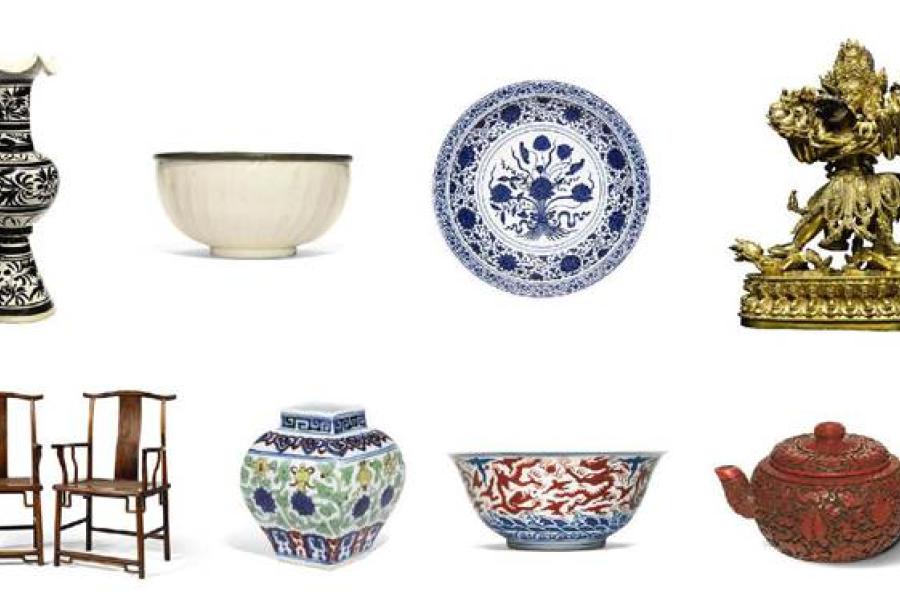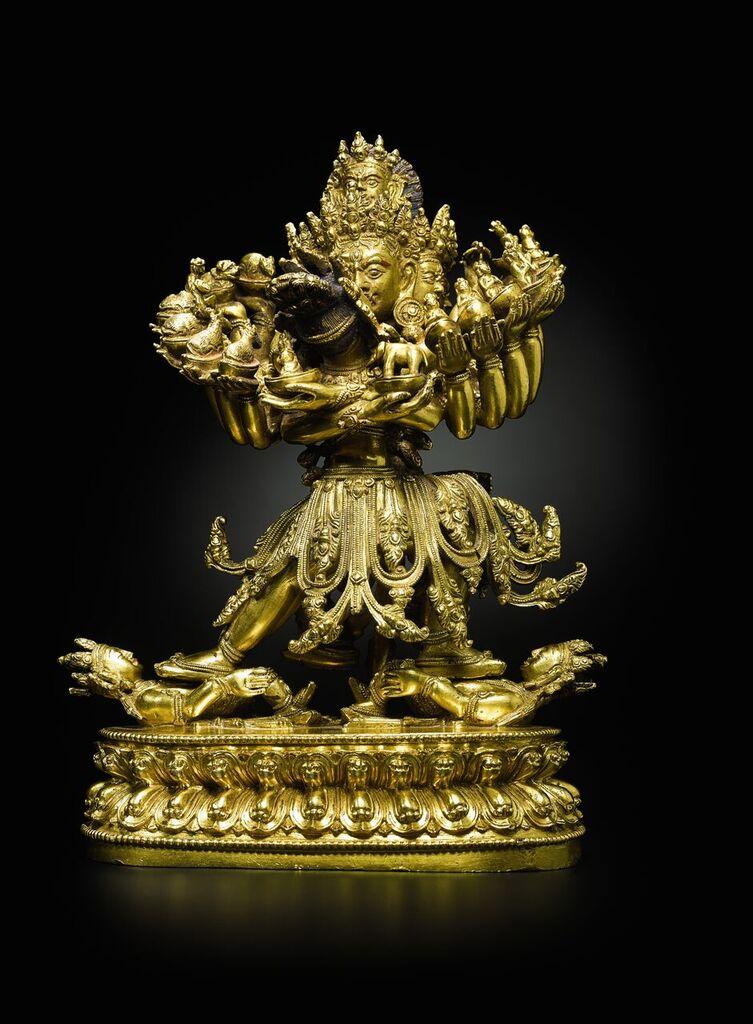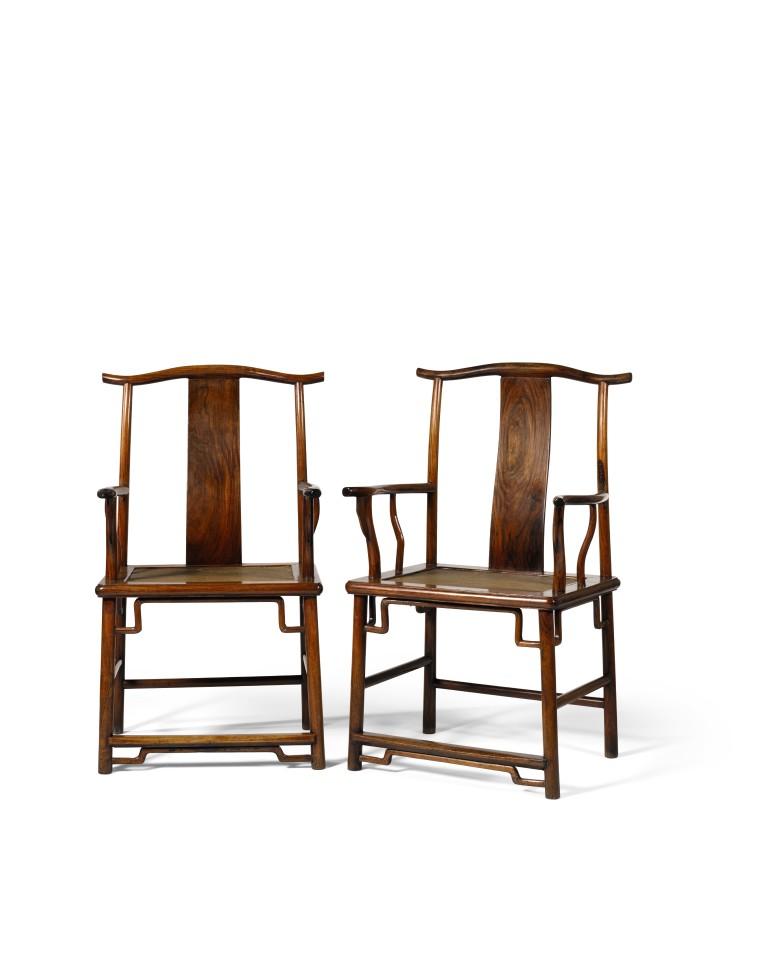Exquisite Objects from Private Hands Lead Chinese Art Sale in London
 11 MAY 2016 London | 10:00 AM BST Important Chinese Art - Mit freundlicher Genehmigung von: sothebys.com
11 MAY 2016 London | 10:00 AM BST Important Chinese Art - Mit freundlicher Genehmigung von: sothebys.comWas: Auktion
Wann: 11.05.2016
Robert Bradlow, Senior Director, Chinese Works of Art, Sotheby’s London, commented: “This promises to be one of our most eclectic London sales, dominated by fresh-to-the-market material imbued with a refined and elegant aesthetic.”
A Rare and Superbly Carved White Jade ‘Three Dogs’ Group Qing Dynasty, Early 18th Century 8.2cm Estimate: £20,000-30,000 / HK$224,000-335,000This delightful carving is one of a group of fine jades from an English private collection featuring animal subjects. It is a masterfully rendered representation of three dogs, playfully wrestling with one another. Though jade carvings of hounds, generally portrayed in resting poses, were popular from the Tang dynasty onwards, they are rarely found in groups of three. The skill of the craftsman is evident from the carefully studied and naturalistic depiction of the dynamically intertwined bodies. Furthermore, this particular piece was cleverly fashioned in accordance with the shape of the jade pebble, in order to minimise wastage of the precious material.
A Large and Rare ‘Ding’ ‘Fish’ Basin Song/Jin Dynasty 32cm Estimate: £100,000-120,000 / HK$1,120,000-1,340,000Following Sotheby’s successful sale in May 2015 of The Soul of Japanese Aesthetics: The Tsuneichi Inoue Collection, which encapsulated the refined collecting taste in Japan in the early to mid-20th century, this year’s auction features a group of early Chinese ceramics from Japanese collections. This large and rare basin is an outstanding example of the elegant and austere aesthetic, characteristic of Song dynasty ceramic work, which has appealed to Japanese sensibilities for centuries. The interior of the bowl depicts a large carp swimming amongst water weeds, while the exterior is intricately carved and moulded with three rows of overlapping upright leaves, applied with an even ivory-coloured glaze. Song ceramics have been admired and appreciated in Japan since the Kamakura period, when Buddhist monks travelled to China and returned with tenmoku and celadon ware, along with the Chinese practice of drinking tea. As Song ceramics began to play an increasingly important role in the ritual of the Japanese tea ceremony, they became an integral part of Japanese culture.
A Large ‘Cizhou’ Painted Vase Jin Dynasty 46cm Estimate: £30,000-40,000 / HK$335,000-4This rare vase ranks among the largest – and most innovative – Cizhous wares, its delicate design contrasting the freely painted black decoration on the surface against the white background.
A Rare Gilt-Bronze Figure of Kapaladhara Hevajra Ming Dynasty, 15th Century 23cm Estimate: £150,000-200,000 / HK$1,680,000-2,240,000Gilt-bronze Buddhist figures produced during the Ming dynasty in the 15th century are highly distinguished, admired for their exquisite refinement and craftsmanship. This rare and intricately carved figure depicts Kapaladhara Hevajra, locked in union with his consort Nairatmya.
A Pair Of Huanghuali ‘Official’s Hat’ Yokeback Armchairs, Guanmaoyi Qing Dynasty, 17th/18th Century Estimate: £80,000-120,000 / HK$ 895,000-1,340,000This exceptional pair of ‘official hat-shaped chairs’ was acquired in the 1950s by Dr J. H. Zeeman, the Charge d’Affaires at the Embassy of the Netherlands in Beijing. Strikingly modern in their simplicity of form and linear design, these high chairs retained a connotation of status and authority associated with the elite gentry in Chinese society. Their name derives from the winged hat that was part of the formal attire of Ming officials. The origin of this type of chair is uncertain, though it has been suggested that the design was imported from outside China.
A Finely Carved Celadon and Russet Jade Figure of a Fisherman Qing Dynasty, 18th Century 10.5cm Estimate: £40,000-60,000 / HK$447,000-670,000The Fleischer Collection of Jades was formed by Wilfred Fleischer, whose interest in Asian art grew during the time he spent in Japan working as Editor-in-Chief of the country’s first English-language newspaper, established by his father. He amassed a substantial collection of Japanese and Chinese works of art during the 1920s and early 1930s, impressive not only for its diversity but also for the attention paid to the quality and rarity of the works. This figure of a fisherman is a magnificent piece of carved jade. The carver has skillfully retained the natural russet skin of the stone for the fisherman’s hat and shawl, and the carp, highlighting the minimal wastage of the precious material.
A Rare Wucai Square Jar Jiajing Mark And Period 12.5cm Estimate: £20,000-30,000 / HK$ 224,000-335,000A group of Chinese ceramics from the Joseph M. Morpurgo Collection is testament to the quality of the works acquired by four successive generations of the Amsterdam Morpurgo dynasty, whose name is inextricably linked to the history of the Dutch art market. This square-form jar is one of the finest examples of the Jiajing period. Such jars required the utmost precision when potting and firing as they were made from a mould. The bajixiang and lotus motif continued to be popular in the succeeding Wanli reign, when it was used on jars of globular shape.
A White-Glazed Kundika Tang Dynasty 21.8 cm, 81⁄2 in. Estimate: £20,000-30,000 / HK$224,000-335,000This ewer is one of the finest pieces among a group of Tang and Song ceramics from a Dutch private collection, notable for their elegant forms and simple glazes. Ewers of this type, known as kundika after the Sanskrit term for a ‘pure-water bottle’, were used in Buddhist ceremonies during the Tang dynasty and derived their shapes from metal prototypes.
An Inlaid Zitan Box And Cover Qing Dynasty, Kangxi Period 25.4 by 15 by 9cm Estimate: £6,000-8,000 /This superbly decorated box of the Kangxi Period is part of a European Private Collection acquired in the 1940s in China by the late Sir Anthony Hastings George. The precise and delicate motifs illustrate in detail three men riding horses and hunting geese, a falconer on horseback and one standing attendant. Among the precious materials used are mother of pearl and lapis lazuli.
A Very Rare Cinnabar Lacquered Yixing Teapot Qing Dynasty, Qianlong Period 19.5cm Estimate: £30,000-50,000 / HK$335,000-560,000This very rare and ornate teapot marries Yixing clay with cinnabar lacquer, resulting in a highly original vessel that is both decorative and functional. A similar cinnabar and Yixing teapot is currently held in the National Palace Museum, Taipei. Tea wares were produced in a variety of media during the Yongzheng and Qianlong reigns, including jade, cloisonné and painted enamel, and porcelain.
A Rare and Large Iron-Red and Blue ‘Dragon’ Bowl Jiajing Mark and Period 36.5cm Estimate: £30,000-50,000 / HK$ 335,000-560,000This vibrant and rare bowl from the Jiajing period depicts iron red dragons chasing flaming pearls above tempestuous waves of cobalt blue. The dynamic motif of red five-clawed dragons above blue waves can be traced back to the early 15th century, as seen on a Xuande mark and period bowl, now located in the Palace Museum, Beijing.
A Large Blue And White ‘Lotus Bouquet’ Dish Qianlong Seal Mark And Period 41 cm Estimate: £60,000-80,000 / HK$ 670,000-895,000This piece embodies the brilliant creativity of Qing craftsman, who were able to create vessels that successfully combined contemporary developments together with elements stemming from antiquity: the fine porcelain body and smooth tactile glaze, typical of the Qianlong period, and lotus bouquet motif that was inspired by the celebrated wares of the early Ming dynasty. Dishes painted with lotus bouquet were first revived under the Yongzheng emperor, who was keen to see historical masterpieces replicated as a reminder of the nation’s glorious past. By the Qianlong reign, the style of painting of this motif was slightly altered, and applied on dishes of various shapes and sizes, of which this piece is the largest known type.
Tags: Asiatische Kunst, China, Porzellan Lot 302 Inlaid Zitan Box and Cover - Mit freundlicher Genehmigung von: sothebys.com /
Lot 302 Inlaid Zitan Box and Cover - Mit freundlicher Genehmigung von: sothebys.com / Wer: Sotheby’s Auktionshaus
11 MAY 2016 London | 10:00 AM BST Important Chinese Art
 Lot 7 White Jade 'Three Dogs' Group - Mit freundlicher Genehmigung von: sothebys.com / Sotheby’s Auktionshaus
Lot 7 White Jade 'Three Dogs' Group - Mit freundlicher Genehmigung von: sothebys.com / Sotheby’s Auktionshaus Lot 65 Gilt bronze Figure of Kapaladhra Hevajra. - Mit freundlicher Genehmigung von: sothebys.com / Sotheby’s Auktionshaus
Lot 65 Gilt bronze Figure of Kapaladhra Hevajra. - Mit freundlicher Genehmigung von: sothebys.com / Sotheby’s Auktionshaus Lot 39 Pair of Huanghuali Official s Hat Yokeback Armchairs - Mit freundlicher Genehmigung von: sothebys.com / Sotheby’s Auktionshaus
Lot 39 Pair of Huanghuali Official s Hat Yokeback Armchairs - Mit freundlicher Genehmigung von: sothebys.com / Sotheby’s AuktionshausCopyright © 2025 findART.cc - All rights reserved
